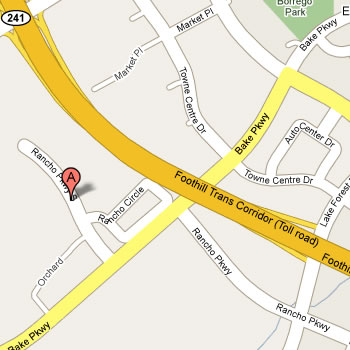SO HOW’S THE RESISTANCE TRAINING COMING?
Ron Saetermoe
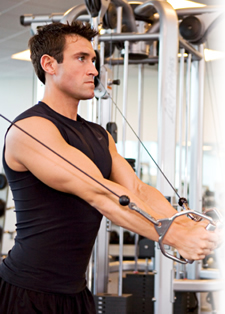 As you know, we’re huge advocates for resistance (strength) training here at Triathica. Jarrett takes the lead but I’m really concentrating on this for 2010. I’m going to need it if I’m going to qualify for Kona. (Did I say that out loud?)
As you know, we’re huge advocates for resistance (strength) training here at Triathica. Jarrett takes the lead but I’m really concentrating on this for 2010. I’m going to need it if I’m going to qualify for Kona. (Did I say that out loud?)
Alyson Wolfe, a grad student at Cal State Fullerton, helped us formulate the Triathica program. It’s really coming together quite well. So well, that I expect we’ll turn it into a book at some point.
I’m validating our program now as the designated Triathica guinea pig. I can tell you that it is definitely kicking my butt! Who would think that you could hurt so badly without lifting 200 lb weights?
Actually, I see my muscle pain as a very good thing. I feel my core, upper body but mostly my legs getting stronger (which is where I really need it).
I had a couple thoughts I’d share with you that may help improve your triathlon performance next year:
1. Get on a resistance-training program. If it’s not ours, get with someone. You’ll see better performance in your races and help reduce injuries.
2. Get started right away. I started my program last week (twice a week) and since I’m so sore, it’s compromising my swim, bike and run training. Delaying your resistance training until you’re already into your season will compromise your training too.
3. Start off easy. It may seem ridiculous doing so few sets with so little weight to start, but a slow build will help you make consistent gains without injuring yourself. The same goes for swim, bike and run training.
4. Many of the exercises can be done at home. Get yourself a fitness ball, some bands and perhaps some dumbbells so you can do many of the exercises at home. Even though I have a 24 Hour Fitness membership AND MY OWN GYM, I still find it convenient to work out at home periodically.
5. Always use proper form. It amazes me to see men and women at the gym hoisting these huge weights and using lousy form. Just like your swimming, cycling and running, form is critically important. Without proper form, you won’t get the maximum benefit and will dramatically increase the chances of injury.
We’d enjoy hearing about some of your resistance training ideas as well.
TRIATHICA NEEDS YOUR HELP!
Ron Saetermoe
 I’ve been very fortunate to have a successful automotive marketing and consulting company for 19+ years. It’s given me a good life and I’ve done some very rewarding work. Let’s face it, Automotive Associates has allowed me to pursue my passion.
I’ve been very fortunate to have a successful automotive marketing and consulting company for 19+ years. It’s given me a good life and I’ve done some very rewarding work. Let’s face it, Automotive Associates has allowed me to pursue my passion.
My passion, as you know, is triathlon. It’s been about two years since I started looking for a niche in the triathlon space and discovered that there weren’t any gyms specializing in triathlon; in the world! Could there be an opportunity there?
Jarrett came on about six months after my epiphany and started researching the market. Of course the research looked good at the time so we developed our business plan and opened the business in June this year.
So far it’s been really great, but we need your help. Mostly we need to spread the word about Triathica and we’ve got a great vehicle to do it with . . . the Triathica Triathlon Roadmap.
By simply entering your email address you get a free copy of the Triathica Triathlon Roadmap – a $19.99 value. How much easier could it be? If you’re already on our email list you can download the book for free right now.
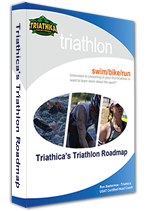
Perhaps the easiest way to help us is to forward this email newsletter to everyone you know and have them sign up for the free copy. Simply point them to the Triathica Triathlon Roadmap box on our homepage at:
www.triathica.com
We really appreciate your help.
Cheers!
PERIODIZE YOUR TRAINING
Jarrett Pflieger
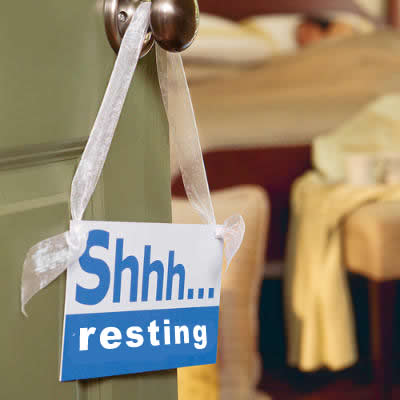 Are you the type of person that does the same workouts week in and week out and constantly tries to improve on your last training session? Please stop. You will save yourself a lot of time and maybe even get faster in the process.
Are you the type of person that does the same workouts week in and week out and constantly tries to improve on your last training session? Please stop. You will save yourself a lot of time and maybe even get faster in the process.
Many athletes fail to realize that our bodies need rest. There’s a little voice that tells us to train faster, longer, and more often or we won’t get better. That is true to some extent, but we forget one very important aspect . . . our bodies need to recover through rest.
That’s right, you can’t get better if you don’t recover and adapt from your workouts, and you can’t recover if you don’t rest. Periodizing your workouts ensure that you get the appropriate amount of rest, while still continuing to vary and build on your workouts to get better. So how do you periodize your current training?
There are many views and opinions on this matter, but one system that seems to work is based off five phases; adaptation, base, build, race, and transition. With each phase, you change up and focus your training to build up a different part of your fitness. Adaptation phase brings you slowly back into training from your off-season. Base phase consists of easy and longer workouts to build up your aerobic base. Build phase continues to build off that base and incorporates more speed work and intensity to increase your speed and endurance. Race phase contains your most intense training sessions leading up to your race, but also incorporates at least a week or two of tapering depending on the distance you are racing. Tapering is reducing your training volume and intensity so your body can absorb your very intense race phase training so that you reach your peak fitness on race day.
With this method, you basically break up your year into five phases of training of nine-weeks each. The remaining weeks in the year are used for whatever you want. Each nine-week “macrocycle” contains three “microcycles” within. The microcycles consist of a moderate week, a maximum week, and then a recovery week. This allows you to start out pretty hard, max out the next week, then recover the third week. Some athletes can do a three-week build then one recover, while others might need to recover after each hard week of training. It really depends on the athlete but a two-on, one-off scheme seems to work for most. By increasing your fitness gradually in cycles, you can better absorb your training and prevent burnout or overtraining.
Just play around with it and see what you can accomplish this season. Definitely consult a certified triathlon coach if you are unsure about putting together your own training plan. Make sure you get plenty of rest and are frequently varying training duration, speed, and intensity to get the most out of your workouts.
DEVELOPING YOUR TRAINING WEEK
Ron Saetermoe

After you’ve mapped out your race year you’ll want to develop your weekly routine. I highly recommend getting into a routine so you can adequately prepare your body and mind.
We all need motivation to train. It might look easy when others get up at 4:00 a.m. when it’s 40 degrees outside and jump into the pool, but it’s not. Getting into a routine and getting committed to it will help a lot. Better yet, recruit (con) another athlete to train with you. Misery loves company!
When developing my weekly plan I look at my schedule day by day. Do I have any routine commitments (like work) to consider? I take tennis lessons Monday evenings with my son, so any training I do must be done before or after that.
Then, I look at how much time I have available (and how much I want to train) each day. Since I’m a morning person I schedule one training session every morning. And since I do work, I schedule another session every Monday – Thursday evening. That’s right, us hardcore triathletes train twice a day!
Fridays for me are recovery days to help me get some rest for the endurance stuff I do on Saturday and Sunday so I only do one workout. Saturday is generally a long bike ride of 3 – 8 hours with a transition run. Sunday is a long run of 1 – 3 hours preceded by a short bike ride. This sequence has me running Sunday on tired legs from Saturday . . . just like my races.
I made a couple changes in my training from last season. The most notable is the addition of resistance (strength) training. If you’ve been reading this newsletter you know what a strong proponent of resistance training Jarrett is. I did my first two sessions this week and they kicked my butt! I see that as a good sign.
The other big change I’m making is reducing my swim workouts and increasing my cycling workouts. I generally finish the swim in the top 10% of guys in my age group but I usually only finish in the top 25% of cyclists. And since the bike portion of the race takes more time, this change makes sense.
The following chart is what a “moderate” week in the “build” period looks like for my Ironman training:

CT = CompuTrainer
TM = Treadmill
Develop your own weekly plan and you’re on your way to a better season.
MAKE 2010 YOUR YEAR!
Ron Saetermoe
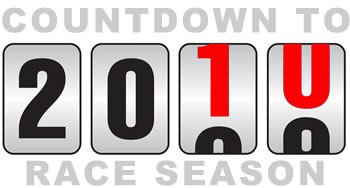 Yesterday I tried signing up for the Carlsbad ½ marathon (I LOVE racing this distance). Sold out! Then I tried signing up for the Vineman 70.3. Sold out! Guess what, it’s not too early to start thinking about your races for 2010. In some cases you’re already too late.
Yesterday I tried signing up for the Carlsbad ½ marathon (I LOVE racing this distance). Sold out! Then I tried signing up for the Vineman 70.3. Sold out! Guess what, it’s not too early to start thinking about your races for 2010. In some cases you’re already too late.
I’m told that Ironman Arizona sold out in 24 minutes. Okay, think about that for a minute. You pay $550.00 for a race a year in advance x 2,400 people = $1.3 million!!! I want that gig!
If you really want to do well racing next year you need to be thinking about the races you’re going to do, sign up, and develop your plan. I normally do about 10 triathlons a year and another 8 – 10 running races. That’s a lot for most athletes, but I love to race.
Racing is fun but if you’re trying to make the podium, you need to do more than just register for races and train – you need a plan of attack.
First, don’t try to do too many races. “Too many” is a relative term. 10 may be too many for some whereas 20 might be just right for others. Use your recovery time as a guide. Older, or less fit athletes will take longer to recover than extremely fit, and younger athletes. You’ll want to have time after your races to fully recover, AND have time to gear up for your next race. If you race EVERY weekend you’re not giving yourself enough time.
Second, pick your “A” races carefully. Your “A” races (1 – 3 per year maximum) are the races you feel you really want to perform your best at. You’ll want plenty of training time and taper time before these races.
Third, think of your “B” and “C” races as “catered workouts.” You’re going to race them but you’re not going to need to be carried off on a stretcher at the end of the race. These races help keep you sharp and give you confidence for your “A” races.
I “age up” in 2010 (I’ll be 35 . . . again) so I’m planning my year VERY carefully. I’ve already registered for Ironman Arizona again because I feel this will be my best chance at qualifying for Kona. I’m also going to try to register for Ironman St. George and Ironman Canada at Ironman California 70.3. We’ll see if I get in.
All of my Ironman races will be “A” races for me. I feel that I’m able to consider three Ironmans “A” races because they’re spread out enough. I’ll have plenty of time to train and taper before my big races.
If you haven’t mapped out your races yet you’d better get on it!
Cheers!
ROAD BIKE VS. TRIATHLON BIKE: WHICH TO CHOOSE?
Jarrett Pflieger
So you are trying to decide which bike to use/buy for your first or next triathlon race. What are the differences between a road bike and a triathlon bike? Which one should you choose? The answer is actually simpler than it may seem.
Without getting into detailed technical differences between the two, there are a few major things that set the two types of bikes apart.
Tri Bike vs. Road Bike:
A tri bike is specifically designed to be ridden as fast as possible while minimizing drag and energy expenditure by the rider. To increase aerodynamics, tri bikes are fitted with aero bars that allow the rider to lean forward and rest their forearms on pads located on top of the handlebars. This exposes less total frontal surface area and allows riders to cut through the wind instead of acting like a sail as if their body was in an upright position.
The seat tube angle is also steeper on a tri bike than a road bike. What this means is unlike a road bike where the seat angle points towards the rear of the bike, the tri bike’s seat in more vertical. This positions the rider closer to the front of the bike and allows the rider to maintain a larger hip angle while in the aero position. This benefits the athlete by allowing them to utilize hamstring and glute muscles more effectively without relying too much on the quad muscles. You need as much energy in your quads that you can manage when it comes time to run off the bike, so minimizing quad strain on the bike portion of the race is crucial to fast triathlon run and overall times. In terms of pure speed and saving energy, a triathlon bike is king.
A road bike is designed a bit differently. They are meant to be more dynamic, maneuverable, and optimal for power production due to constant changes in terrain, breaking and sprinting by fellow riders, and overall unpredictability of the pure cycling races. They do not have aero bars and are meant to be ridden mostly in a relatively upright position with hands on the top of the handlebars. The seat tube angle is less steep which allows for better power production since you can better utilize the powerful quad muscles.
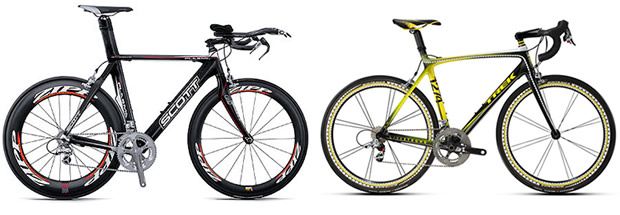
Which bike should you choose?
The short answer is…it depends. If you are new to triathlon, use whatever is available. Whether it is a used road bike on eBay, old mountain bike in the garage, beach cruiser, or pink huffy, it doesn’t matter. If you are a new triathlete, don’t spend money before you absolutely know you will continue with the sport. You won’t set any records your first time out, so don’t worry too much about it.
If you have done a few triathlons and are ready to buy a bike but don’t have the money for a full triathlon bike, a road bike with a set of aero bars strapped on works just fine. You may shave a little time with a tri bike, but road bikes are usually cheaper and more easily accessible than tri bikes and unless you are a very good athlete, the differences are negligible.
If you have a few races under your belt and are starting to become competitive in your age group, or plan on it in the future, definitely think about getting a triathlon bike. If you are a complete newbie, but want to blow a few grand on a tri bike just because you can afford it, go for it. It makes it easier for us athletes on a budget to pick up a barely used tri bike cheap on Craigslist when the owner decided they didn’t want to do triathlons anymore after only a few races.
Bottom line, when trying to decide between the two types of bike, just go with whatever is easier for you to get. Beginner triathletes are better off buying a used road bike with aero bars and putting the extra money they saved into some good coaching. Trust me, it will save you more time in the long run than an expensive triathlon bike.
IF THE BIGGEST LOSER CAN DO THIS, SO CAN YOU
Ron Saetermoe
If you’ve ever done a triathlon, of any distance, you’ve probably had at least one person tell you “I could never do a triathlon.” I’ve actually heard it a bunch of times and my response is always the same “Yes, you can.”
Now, I’m a positive person, but I’m not one of those people that tells everyone they can do anything if they put their mind to it. If that’s true then why don’t we have a cure for the common cold?
I do, however, believe that almost anyone can do a triathlon if they put in the time and work with a plan. I’ve seen it many times. If you hang around a while, after nearly any race, you’ll see the people that defy logic. Young kids, overweight people and people so old you wonder how they stay upright without a walker.
Bill Bell is one of those guys. He’s slowed down a lot in recent years, and has had multiple knee surgeries, but he’s still out there doing it at age 80!
Attached to this article is a YouTube video of an equally inspiring dude, Matt Hoover. Matt Hoover was the winner of the NBC television show “The Biggest Loser” back in 2005. I won’t say too much about the video other than you should grab a tissue or two before you watch it. 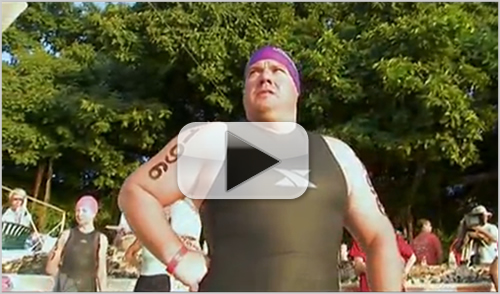
The people in our sport are amazing. I guess one of the reasons I enjoy it so much is that those that are in it constantly inspire me. I’ve been lucky to know some great triathletes and coaches that have given me the confidence and guidance to help me reach my triathlon goals.
I feel blessed to have the opportunity to work with so many athletes here at Triathica. I try encouraging everyone to reach his or her own individual goals while I keep my own in sight.
You CAN do this!
Cheers!
STAYING MOTIVATED
Ron Saetermoe
We’re in the off-season now. How do you know? Look at the rolls beginning to form around your waist!
It’s hard staying motivated during the off-season, especially if you’ve trained and raced hard. So how do you do it?
For me, daily exercise is the norm. A day without exercise is like a day without brushing my teeth. Something’s missing. So these days it’s hard for me not to exercise. How sick is that?
I know that’s not normal, and it’s taken me many years of this twisted behavior to get there, but that’s me. If you’re not like me you may need a little motivation. Here are a couple ideas:
• Exercise with a group. There are plenty of them out there. Most of the triathlon clubs have group workouts and there are plenty of running and cycling clubs.
• Use a training plan. Yes, even during the off-season a training plan can help. Your workouts may not be as long or as intense, but many people find that this structure helps keep them on track.
• Concentrate on your “limiter.” Your limiter is the event you’re weakest at relative to your competition. For me, that’s the cycling leg so I’ll concentrate on doing more cycling during this period.
• Start a resistance-training program. Too many triathletes blow off the resistance (strength) training thing. The off-season is a great time to pull back on the swim/bike/run training and do more resistance training.
• Don’t go home after work. This one gets me most of the time. If I can do my workout immediately after work instead of going home, the chances that I’ll actually get my workout in is expontially higher.
• Watch triathlon videos. We’ve got a bunch here at Triathica and the Universal Sport channel broadcasts triathlons from time to time.
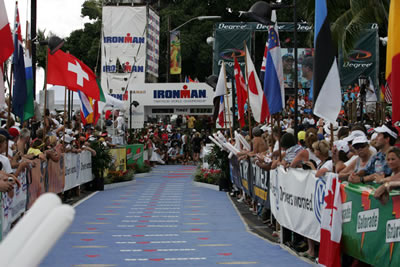
• Register for an early season race. I’ll be doing the Desert Triathlon out at Lake Cahuilla again next year on March 7th and the California 70.3 on March 27th. The “threat” of these early season races helps keep you motivated to stay fit.
I’m sure there are many more ideas out there but these are a few of my favorites. Oh yeah, and don’t forget, we’re here at Triathica to help keep you motivated too.
Cheers!
FREE GROUP WORKOUTS (week of November 30th)
All of our group workouts are free to members and non-members, so come on out (Pool entry is $2.50)!
We want everyone to enjoy our group workouts but we should clarify the intent. The intent of the group workouts is to “workout.” Yes, it includes a social element. Yes, your Triathica host is happy to give you tips. But please be aware that everyone there is attempting to get a workout in at his or her own pace. If we all go at the slowest person’s pace many people won’t be getting in a proper workout. We will attempt to pair you up with another athlete so you’re not left alone.
Week of November 30th
Event: Group Swim
Place: Crown Valley Community Pool in Laguna Niguel (Next to the YMCA; $2.50 entry fee)
Day: Wednesday, December 2nd
Time: 6:00 p.m.
Planned Workout: Individual preference
Event: Group Ride
Place: Triathica HQ
Day: Saturday, December 5th
Time: 7:00 a.m.
Planned Workout: Santiago Canyon Loop
Event: Group Run
Place: Triathica HQ
Day: Sunday, December 6th
Time: 7:00 a.m.
Planned Workout: Whiting Ranch Loop
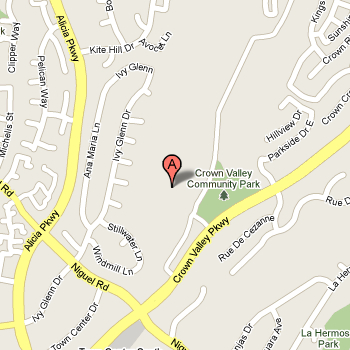 |
Crown Valley Community Pool – Laguna Niguel From the 5 North take the exit 86 for Crown Valley Pkwy. Turn right at Crown Valley Pkwy and drive about 3 mile. The pool will be on the right. |
IRONMAN ARIZONA RACE REPORT
Ron Saetermoe
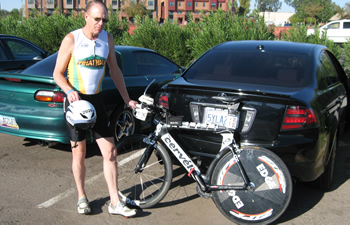 It was nice to have Jarrett accompany me this year to Arizona. We had the chance to talk triathlon until we were blue in the face and get to know each other a little better.
It was nice to have Jarrett accompany me this year to Arizona. We had the chance to talk triathlon until we were blue in the face and get to know each other a little better.
Friday was very busy with driving out to Tempe, checking into the race, athlete dinner and athlete’s meeting. I felt like I had already completed my Ironman.
Saturday started early with breakfast at the Doubletree hotel. They really did a nice job. I’ll probably go back again next year.
Over breakfast I debated, then subsequently talked myself out of, swimming in Tempe Town Lake at 7:00 a.m. I knew the water was cold, and dirty, and didn’t feel the need to validate either. A nice 20-minute swim in the 80-degree hotel pool was just what I needed.
After my swim I did the most insane thing a triathlete can do – I registered for Ironman Arizona – OVER A FULL YEAR BEFORE THE RACE!!! I hadn’t even completed this one and I paid for the next one! What lunacy! And how in the heck do they collect $550.00 from 2,400 people a year in advance? I want that gig! (BTW, they’re sold out for 2010!)
After that I put Russ Jones’ speedy Zipp race wheels on and tested out the bike. Edge Cyclesports had it dialed in perfectly.
Then on to drop off my swim-to-bike and bike-to-run transition bags. Everything was going perfectly.
Back to the hotel for a little nap and dinner later with Jarrett and Scott Neubauer of Coastal Health and Fitness, an Active Release practitioner. Carbo loaded and ready for a good nights sleep.
I did sleep well for the night before an Ironman. I guess I got about six hours, which is about six hours more than I’d previously gotten. Had my breakfast of cottage cheese, walnuts and blueberries, English muffin and OJ and I was ready to rock!
We got down to the race site about 5:00 a.m. and I did all the prerace stuff including putting air in my tires and numerous potty breaks.
It was funny that my bike was racked directly between Kim McDonald and Brian Smallwood. Both raced the sprint worlds in Australia. Kim won his age group (55 – 59). Kim is known for his short-course prowess but punched his ticket to Kona back in 2008. Amazing guy.
Brian is in my age group (50 – 54) and has gone to Kona a couple times. A strong swimmer and cyclist, Larry Davidson always seems to beat him on the run. This year he would be my key competition.
At 6:40 a.m. they let the age-groupers down on to the dock and into the water. The pros were already in the water and were scheduled to start at 6:50. The water was cold . . . about 52 – 53 degrees. Unlike Ironman Coeur d’Alene where the water was about the same temperature, IMAZ is a water start, not a shore start, which means we were in the cold water doing nothing for 20 minutes. By the time we started I was practically convulsing because I was so cold.
The cannon went off and my legs immediately froze up. First, intense pain, then hyperventilating, then puking. I never expected this and felt bad for the swimmers behind me (for various reasons). If I could have gotten out of their way and to shore I probably would have quit. How can I swim if I can’t breathe?
Somehow I managed to push through it and swam really easy and eventually picked up the pace. Very frustrating to say the least.
The transition to the bike was SLOW! It didn’t feel as slow as it was. Perhaps it was because things slow down when you’re frozen!
Once I got on the bike I started to thaw. I went hard on the bike knowing that it might impact my run but I wanted to leave it all on the course so I pushed hard. I thought I’d be able to go 5:30, which was about 20.4 MPH. If it wasn’t for the wind I probably could have made it.
It didn’t seem like there was as much drafting as last year but it was still going on. There are a couple narrow spots on the course where it’s tough not to draft but those stretches aren’t too long.
The transition to the run was smooth and faster than last year. My legs were tired but I felt ready to run. This was very different than my two Ironman’s last year. At IMCDA I didn’t have the muscular endurance and at IMAZ I didn’t have the nutrition dialed in. I could tell it was going to be a better day for me.
My splits on the website show my speed ranging from 8:56 to 12:18 per mile. I don’t think those speeds are accurate but so be it. I did start out strong on the run and tried to hold an 8:30 pace, which I did for a while but then slowed quite a bit. From then on it was run and walk through the aid stations. Sometimes I ran through but I did have to walk a couple times.
Somewhere around 20 miles I saw Jarrett with the video camera. Boy, you really don’t want to be video taped when you feel the way I did. He walked with me for a while and asked if he thought I could go 11:30 if I started running again. I figured 11:00 minute miles, so yes.
At that point I felt rejuvenated and started to run; not fast, but it was definitely a run. I ran the rest of the last loop and brought it in strong.
Coming into the finishing chute was a runner up ahead. I wanted to give him his space so he could get the good finish line photo so I slowed down only to have him catch his foot on the loose carpet and take a nosedive. Turns out it was Brian Smallwood, Larry’s nemesis. I asked him if he was okay as he got up and finished the race. I finished one second behind him!
It was a great day for me out there. Nothing goes perfectly, as you can see, but I was thrilled to have beaten my time from last year by over an hour.



